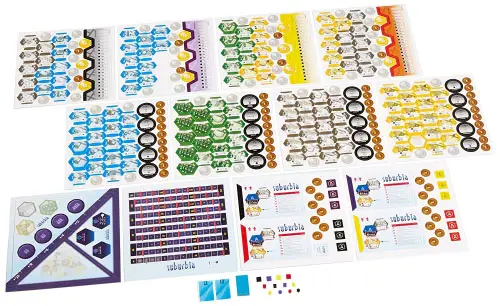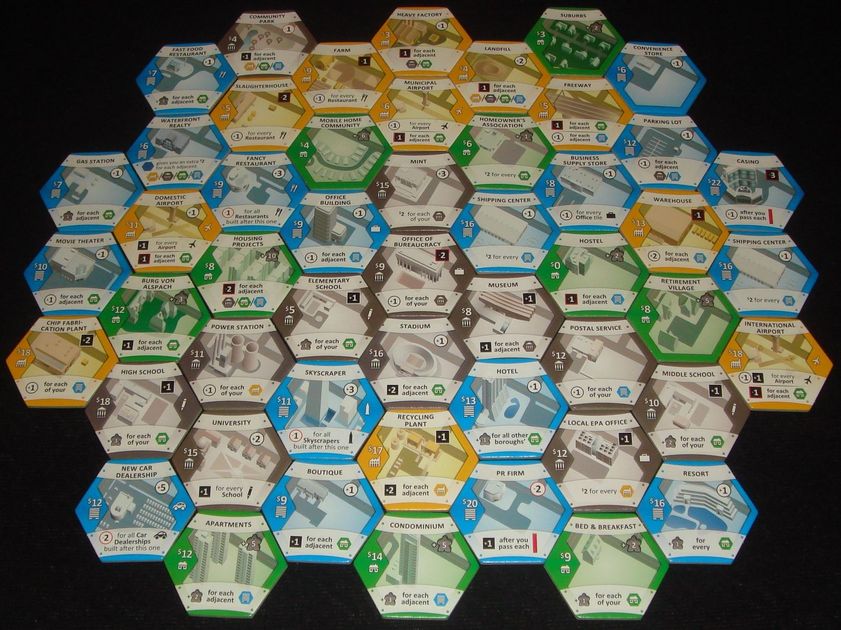


A second effect is that it also stops players planning for a specific building as they cannot be sure it will appear – even if there are three of them. One effect of this is that the game will be different each time you play, as a different assortment of tiles will emerge. Even in a four-player game, only about two-thirds of the tiles will be available during the game. There are three sets of these and, in time-honoured style, the A tiles are available first, then the B’s and, finally, the C’s. The key component of the game thus comprises the hexagonal building tiles. At the end of the game, the player with the highest population + bonuses wins. Throughout the game, they buy more tiles to expand this, increasing or decreasing their income (which provides the money to buy more buildings) and reputation, which attracts population. Each player starts with the same buildings in their Borough. However, a new printing is now with us and I’ve been able to catch up.Īs the name suggests, the game is about developing a city’s suburbs, or “Boroughs” as the rules call them. Mind you, it was my own fault as it wasn’t until the Sunday that I got to Bezier’s stand as I worked my way round the halls.
/pic1355470.jpg)
It’s taken me a while to get to Suburbia as Bezier Games sold out at Spiel ’12 – good news for designer and publisher Ted Alspach, but bad news for me. (Beziar Games, 2-4 players, ages 8 and up, about 90 minutes, $59.99)


 0 kommentar(er)
0 kommentar(er)
